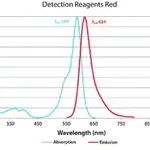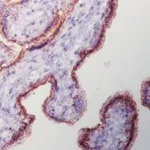
Merck Duolink In Situ Probemaker PLUS
✨AI 추천 연관 상품
AI가 분석한 이 상품과 연관된 추천 상품들을 확인해보세요
연관 상품을 찾고 있습니다...
Duolink® In Situ Probemaker PLUS
Quality Level
제품 라인
Duolink®
technique(s)
immunofluorescence: suitable
proximity ligation assay: suitable
적합성
suitable for brightfield
suitable for fluorescence
배송 상태
wet ice
저장 온도
−20°C
To perform a complete Duolink® PLA in situ experiment you will need two primary antibodies (PLA, IHC, ICC or IF validated) that recognize two target epitopes. Other necessary reagents include a pair of PLA probes from different species (one PLUS and one MINUS), detection reagents, wash buffers, and mounting medium. Note that the primary antibodies must come from the same species as the Duolink® PLA probes. Analysis is carried out using standard immunofluorescence assay equipment.HRP is also available for brightfield detection.
Specificity
Duolink® In Situ Probemaker extends your possibilities even further by allowing you to create your own PLA probes to meet specific assay requirements.
- Study homodimers
- Study protein-protein interactions with two primary antibodies derived from the same species
- Study protein-protein interactions with primary antibodies from any species
Using Duolink® In Situ Probemaker PLUS and MINUS, you simply conjugate the PLUS and MINUS oligo arms directly to your antibodies in a quick and convenient procedure. As well as providing unique capabilities, this also means there is no longer any limitation as to which species your primary antibodies have to be derived from in order perform a Duolink® In Situ assay.
Application Note
The antibody to be conjugated must have a concentration of 1 mg/ml. Do not use volumes larger than 20 ml for conjugation. The antibody must be in an amine free buffer, ideally PBS. The buffer should be carrier free but may contain up to 0.1% BSA, 5% trehalose, and 0.02% sodium azide.
- Study homodimers by using one monoclonal antibody split into two halves. Label one with the PLUS oligo and the other with the MINUS oligo.
- Use antibodies from same species: study protein-protein interactions, protein modifications, or single proteins, using two primary antibodies derived from the same species. Label one of the antibodies with the PLUS oligo and the other with the MINUS oligo
- Use antibodies from any species: study protein-protein interactions, protein modifications, or single proteins, using one or both primary antibodies derived from species other than mouse, rabbit or goat. Label one of your secondary antibodies with the PLUS oligo and the other with the MINUS oligo. Or, combine one labeled secondary antibody with a standard secondary Duolink®In Situ PLA probe.
Test your primary antibodies (IgG-class, mono- or polyclonal) in a standard immunofluorescence (IF), immunohistochemistry (IHC) or immunocytochemistry (ICC) assay to determine the optimal fixation, blocking, and titer conditions. Duolink® in situ reagents are suitable for use on fixed cells, cytospin cells, cells grown on slide, formalin-fixed, paraffin embedded (FFPE), or tissue (fresh or frozen). No minimum number of cells is required.
Let us do the work for you, learn more about our Custom Service Program to accelerate your Duolink® projects
🏷️Merck Sigma 상품 둘러보기
동일 브랜드의 다른 상품들을 확인해보세요

Merck Sigma
Merck Duolink flowPLA Compensation Beads - Negative Control
378,700원

Merck Sigma
Merck Duolink In Situ Red Starter Kit Goat/Rabbit
2,504,950원

Merck Sigma
Merck Duolink In Situ Probemaker PLUS
1,101,480원

Merck Sigma
Merck Duolink In Situ Probemaker MINUS
1,101,480원

Merck Sigma
Merck Duolink In Situ Detection Reagents Brightfield
1,352,220원
배송/결제/교환/반품 안내
배송 정보
| 기본 배송비 |
| 교환/반품 배송비 |
|
|---|---|---|---|
| 착불 배송비 |
| ||
| 교환/반품 배송비 |
| ||
결제 및 환불 안내
| 결제수단 |
|
|---|---|
| 취소 |
|
| 반품 |
|
| 환급 |
|
교환 및 반품 접수
| 교환 및 반품 접수 기한 |
|
|---|---|
| 교환 및 반품 접수가 가능한 경우 |
|
| 교환 및 반품 접수가 불가능한 경우 |
|
교환 및 반품 신청
| 교환 절차 |
|
|---|---|
| 반품 절차 |
|
